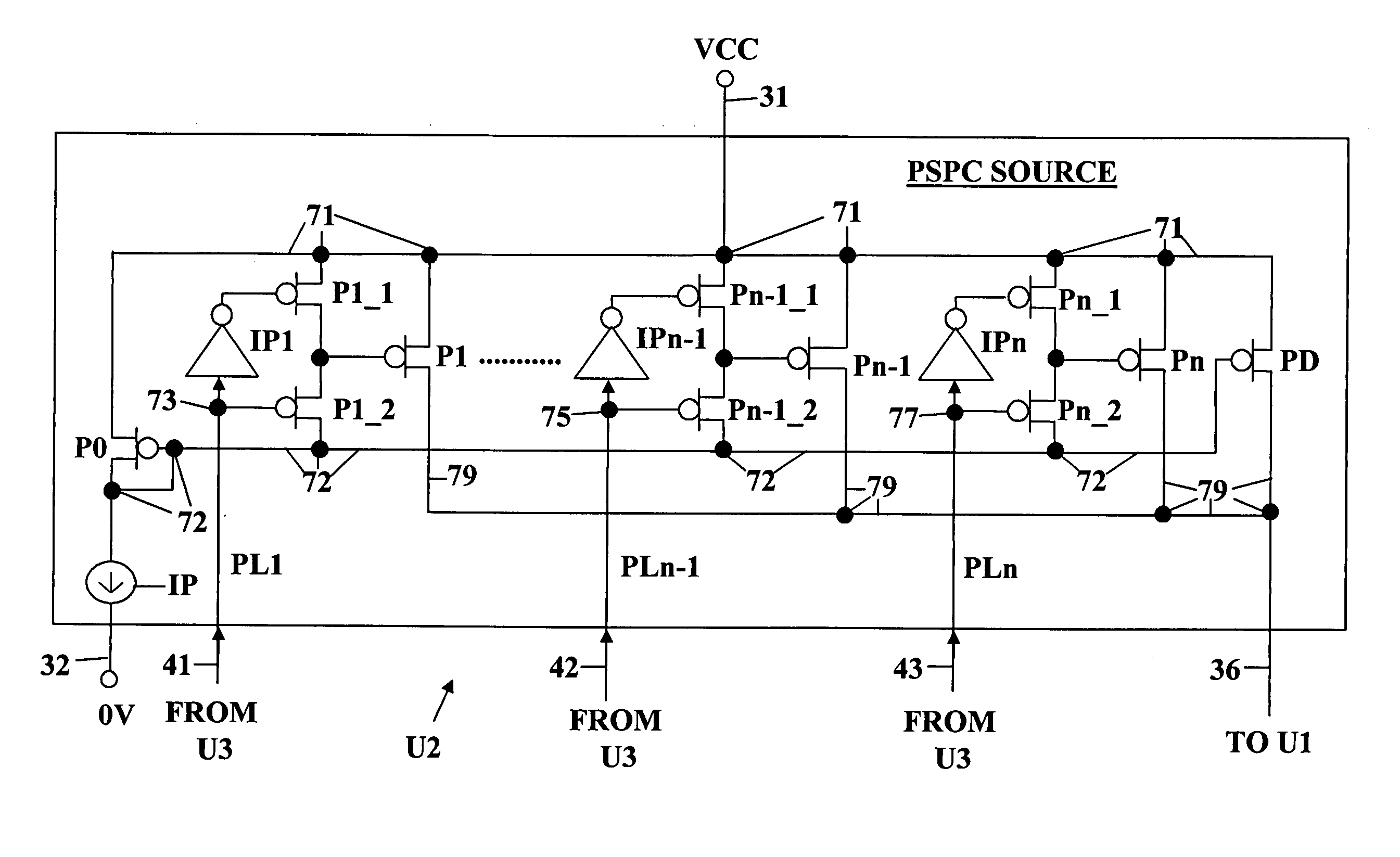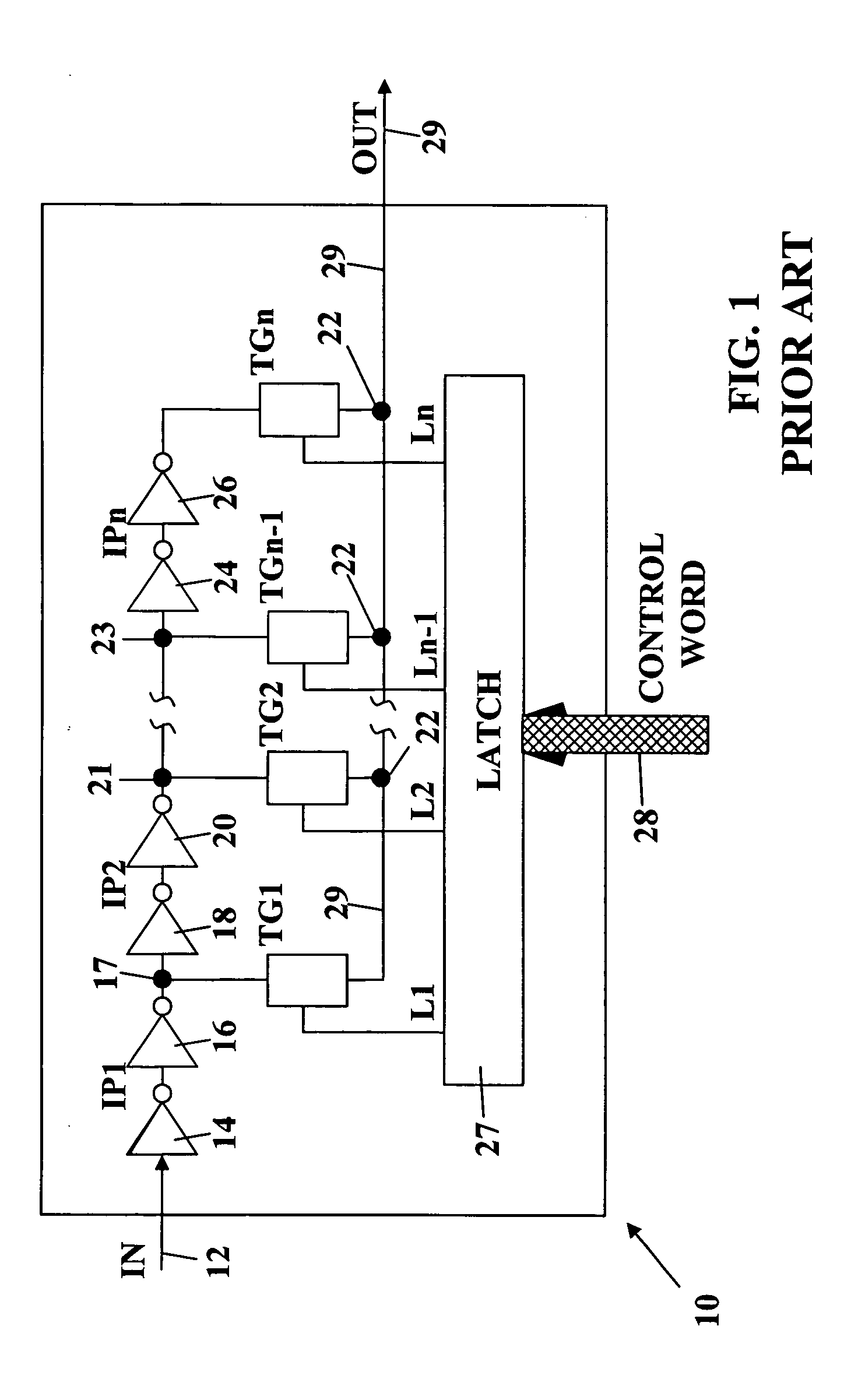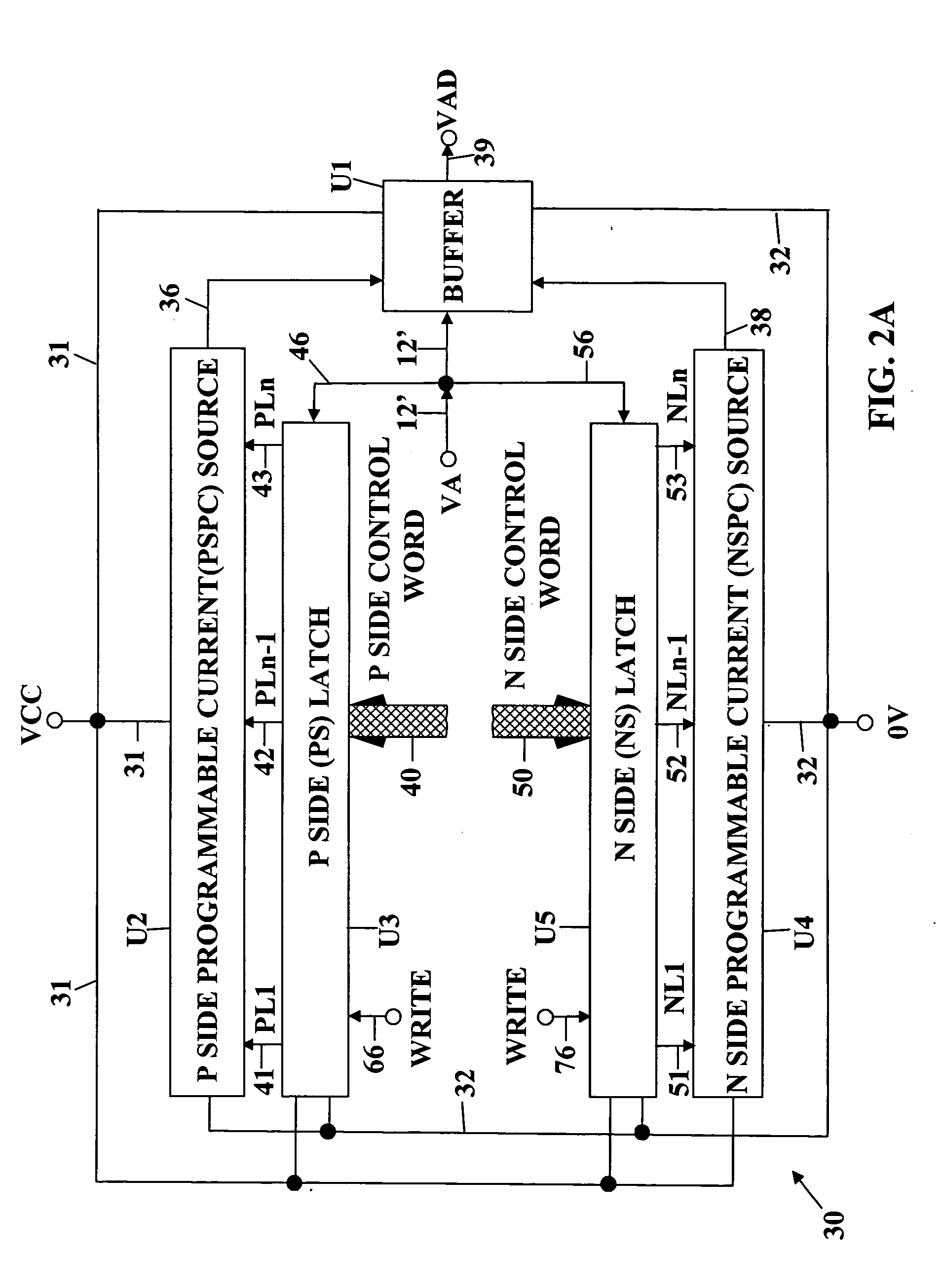Dual edge programmable delay unit
- Summary
- Abstract
- Description
- Claims
- Application Information
AI Technical Summary
Benefits of technology
Problems solved by technology
Method used
Image
Examples
Embodiment Construction
[0033]FIG. 2A is a schematic block diagram of a programmable delay unit 30 in accordance with this invention, which can independently adjust both the rising edge delay time and the falling edge delay time of an output signal VAD which is produced in response to an input signal VA.
[0034] The programmable delay unit 30 shown in FIG. 2A consists of five sub-circuits. A first one of those circuits is a buffer circuit U1, which receives the input signal VA and produces the output signal VAD. The programmable delay unit 30 also includes a P side Programmable Current (PSPC) source U2, a P Side (PS) Latch U3, an N side Programmable Current (NSPC) source U4, and an N Side (NS).
[0035] The latch U3 provides digital signals to the PSPC source U2 to control the adjustment of the falling edge delay time of the output signal VAD relative to the falling edge time of the input signal VA in response to a digital input from P Side Control Word input bus 40 under control of a computer control system ...
PUM
 Login to View More
Login to View More Abstract
Description
Claims
Application Information
 Login to View More
Login to View More - R&D
- Intellectual Property
- Life Sciences
- Materials
- Tech Scout
- Unparalleled Data Quality
- Higher Quality Content
- 60% Fewer Hallucinations
Browse by: Latest US Patents, China's latest patents, Technical Efficacy Thesaurus, Application Domain, Technology Topic, Popular Technical Reports.
© 2025 PatSnap. All rights reserved.Legal|Privacy policy|Modern Slavery Act Transparency Statement|Sitemap|About US| Contact US: help@patsnap.com



